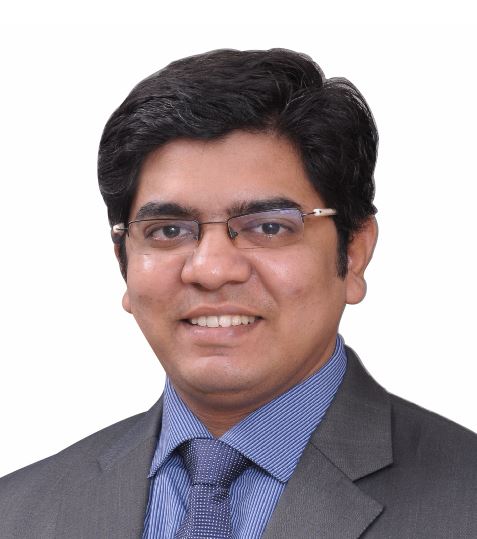Editorial
Case Report | Volume 7 | Issue 4 | JOCR July – August 2017 | Page 1-2 | Ashok Shyam. DOI: 10.13107/jocr.2250-0685.820
Smearing of Open Access by Predatory Journals: Difficult of being Good
Authors: Dr. Ashok Shyam
Department of Orthopaedic, Sancheti Institute for Orthopaedics and Rehabilitation, Pune, India.
E-mail: drashokshyam@gmail.com
Open access policy was started with a noble aim of providing free access to literature for all academicians and clinicians. It stemmed from feeling that it is unethical to keep relevant information and knowledge behind a paywall and in a way deprive a clinician of important information which may be useful in treatment of his patient. The justification of paywall was that publishers have to invest time and effort and resources in making articles online. However the charges were quite high and with advancement in technology making the article online became quite cheap. However most prominent publishers ignored this and continued to charge heavy. Since most of their purchases were done by universities from developed countries, it did not affect them. However clinicians from developing countries were left high and dry with this attitude from the publishers. The universities in these countries were unable and unwilling to provide access to top journals due to cost constraints. In this scenario ‘Open Access’ was considered boon to us clinicians and lot of us thought that we would be able to access good quality literature for free. The journals started charging minimal amount to authors which was running cost for the journal and made all articles open access. Journal of Orthopaedic case reports was also launched in this era by group of clinicians who gained minimal technical knowledge and were able to start the journal with minimal resources [1]. Since our charges were minimal (and still continue to be least among similar journals), the authors supported us very well and we thanks all the authors who have helped JOCR grow. We are glad to provide good peer reviewed literature for free to orthopaedic fraternity. Indian Orthopaedic Research Group (IORG) was born as an academic publisher and we started few more open access journals like International Journal of Paediatric Orthopaedics, Journal of Bone and Soft Tissue Tumors and Trauma International to bring good quality super speciality literature to our readers
However this elation of Open Access was short lived and the same technological advances that made open access possible gave rise to predatory Journals. These journals mushroomed almost overnight as these publishers found that authors are ready to pay for publishing. They kept a skeleton staff and invited unsuspecting editorial board members to be part of the journal. However no peer review is done, quality control is poor and now many of these journals are promising publication in three days of payment without any change to the article. This has led to drastic drop in quality of articles that are published open access. This problem has become so severe that even ISSN India [2] has recognised this issue and taken it up seriously [1]. This has created a unique problem for good quality open access journals and publishers like IORG. With rise in these open access predatory publishers the entire academic world started suspecting all the open access journals. To the extent that journals that were not open access were considered superior to open access journals. Also journals that charge heavily for open access were impressed as better journals than those that charged less. These responses we got from talking with our colleagues, other academic institutes and our readers too. Suddenly something that we though was a nobel cause was looked down upon as a money making agenda. Even ISSN India which was very cooperative with us earlier (since they realised we were all surgeons and not publishers), started to reject our ISSN applications for small errors. Our journal Acta of Shoulder and Elbow Surgery had a hard time with ISSN and took more than a year to receive an ISSN number. While on the other hand predatory publishers could easily get ISSN as they were well versed with ISSN technicalities. This is not really a fault of ISSN India at all as they are following their protocol which is made more stringent to keep the predatory publishers at bay. However this entire change in attitude against open access publishers is a worrisome trend. Should we also stop open access and start selling our articles, so that we become more reputed and dignified. The JOCR editorial board doesn’t really have an answer to this, but we hope this perception changes and academicians become more aware of the situation.
Hopefully things will improve and more information on predatory practices and predatory publishers is circulated and authors and readers start to become more aware of this trend. We again thanks our authors and readers to continue having faith is us.
Please send your views by email to us at editor.jocr@gmail.com
References
1. Shyam A, Shetty G. RESURRECTION OF THE CASE REPORT! J Orthop Case Rep. 2011 Oct-Dec;1(1):1-2.
2. Mahesh G. The Indian ISSN conundrum. Current Science 2017 Feb; 112 (3):452-453.
| How to Cite This Article: Shyam A. Smearing of Open Access by Predatory Journals: Difficult of being Good. Journal of Orthopaedic Case Reports 2017 July-August;7(4):1-2 |
[Full Text HTML] [Full Text PDF] [XML]
[rate_this_page]
Dear Reader, We are very excited about New Features in JOCR. Please do let us know what you think by Clicking on the Sliding “Feedback Form” button on the <<< left of the page or sending a mail to us at editor.jocr@gmail.com





